Interview
Richard Peterson: The Next Chapter
“The Next Chapter,” is a regular feature in Graphic Impressions that focuses on the lives and work of printmakers who have recently moved into a different phase in their careers.
Richard Peterson received his BFA from KCAI and his MFA from the Instituto Allende/Universidad de Guanajuato, México. After 16 years teaching drawing, painting and lithography as an adjunct professor at Ventura College, he received a full-time professorship at College of the Sequoias in Visalia, CA.again starting a print program. He was department chair for 19 years retiring in 2018 after 36 years of teaching his passions, drawing and lithography.
He’s received the National Drawing Association’s Award of Excellence, the Dewar’s young artist recognition award and most recently the SGCI award of excellence in teaching, of which he is most proud.
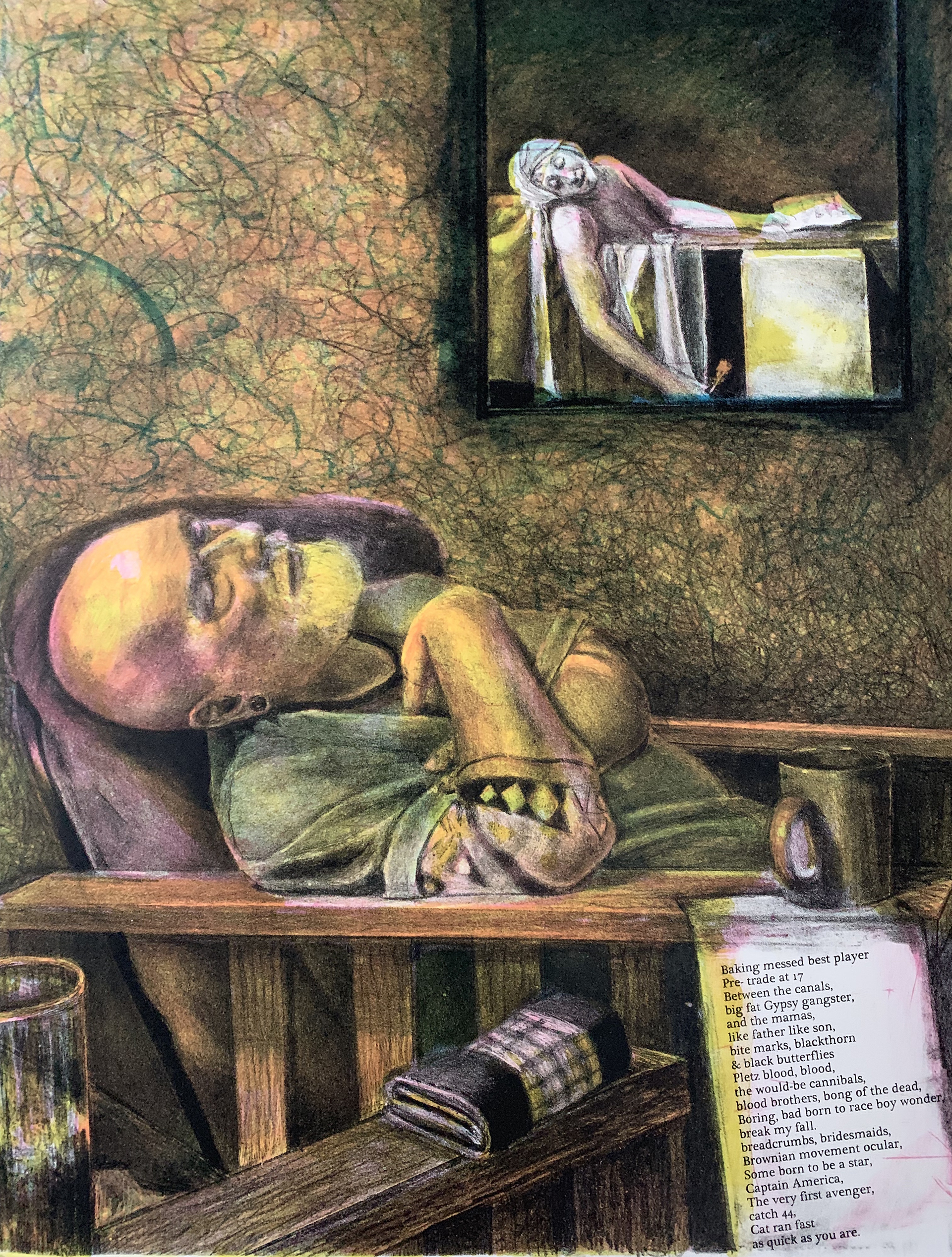
Title
Richard Peterson: The Next Chapter
Author
Blake Sanders

Big Jim Akers Lithograph 20" x 15"
Big Jim Akers
Lithograph
20″ x 15″
The Interview
Blake Sanders: You have over 40 years teaching experience, primarily in two-year colleges though beginning in K-12. You were full-time professorship at College of the Sequoias after sixteen years teaching adjunct at Ventura College. How did you maintain the persistence necessary to earn that full-time position? How did you parlay that position into beginning a printmaking program at COS?
Richard Peterson:
After graduating with my MFA I looked for teaching jobs at nearby colleges and found that schools just didn’t hire young graduates because of inexperience. I was told to get that magic 2 years experience and reapply. I taught K-12 in two different private schools at the same time. Five years of doing this, finally at age 30 I got my adjunct position at Ventura College. Any class that they offered me, I accepted. After 16 years of teaching beginning drawing, figure drawing, oil painting, printmaking, digital painting and Macintosh Basics and operating the college’s two art galleries, I fit the COS job description almost word for word. Very few adjunct professors get the opportunity to teach such a variety of courses. I was lucky that Ventura College needed these classes covered. When I was hired there I expected that faculty would talk art and maybe get together to discuss school, curriculum maybe assignments to share with an art school environment but I was disheartened to find that it was just a job to the full time faculty and that egos were huge & they just couldn’t get along. I was told by the department chair that if I wanted to keep my job I should “NEVER show up a full timer or I was out of there.” There were disagreements and petty bickering going on all of the time between the full time faculty. Egos loomed large. There was constant turmoil & the only thing that kept me going was the students.
At first I was disappointed with the students. Some wouldn’t show up because the surf was up and surfing was more important than beginning drawing. I decided that I would change my approach to teaching at Ventura College. I would make my classes be like art school and the other teachers could just carry on. That meant that I would have to be sneaky if I wanted to teach my assignments. That meant that I had to teach these students discipline & the importance of drawing.
I started the litho program in 1985 which gave me the motivation to go to work every day. I finally took over the print program and taught it all.
When I became full-time at COS at the age of 45, I could finally afford to go to conferences because the school reimbursed faculty. After talking with other professors I found out that things were the same at most schools. I decided I would only hire recent grads if I ever had the opportunity. I would make sure egos were in check.

Make America Great Again
Lithograph
20″ x 15″
2023

Trumped
Lithograph
20″ x 15″
2018
B: You retired in 2018 after 19 years at College of the Sequoias in the California Central Valley. You maintained an impressive program, particularly in lithography, where your students were well-prepared to go on to earn their BFAs. Many went on to grad studies and successful careers. How did you build the program? Why do you think your students responded and found success?
P: When I went to my 2nd interview at COS, I asked that if I was hired could I start a litho program. They enthusiastically said yes and that they wanted a litho program for years. When I was hired at COS I was afraid that administration wouldn’t let me start the litho program so I asked Ventura College for a 1 year leave of absence. If COS changed their mind I would go back to Ventura College. A number of things helped build the print program at COS. Administration at that time saw the value in the art department and helped me build the lithography program by adding classes and finding faculty. A press was donated to us by a former Ventura College student. There was a lot of interest in Lithography at COS. Most students had never heard of it. It was magical to them. I promoted it heavily and encouraged the students who loved drawing to take it. COS students were exceptional. Most were low income and they knew that the only way out of poverty was to get an education. Because of my own upbringing I knew what it was like to try to get through school when growing up in a low income household.
One reason the program was successful was the founding of our print club, Print Works. This club was a group of students who raised money through our hamburger stand in the quad, the selling of t-shirts and our Printathon. We had an annual art auction that raised a lot of money. This along with other fundraisers helped to create an exciting atmosphere for students to get involved and a place where they felt they belonged. A few years we made enough money to pay for 10 students to go to Frogman’s to study with David Morrison and Cynthia Osborne. Later we would host our own print workshops and we paid to have Wayne Kimball, David Morrison, Bonnie Stahlacher, Kurt Kemp, Susan Goldman, Kathryn and Andy Polk, Tom Huck, Susan Goldman, Oscar Gillespie, Michael Barnes & Cynthia Osborne, among others. We would show up to the print room every other Saturday anywhere from 3-6a.m. to have a short meeting and then print. Usually we would make bacon & eggs & I would make homemade biscuits and red-eye gravy.
The biggest reason our print program was strong was because of the dedication of our adjunct faculty. I’m sure a lot of you know who they are, the COS past and present faculty. I attended my first Frogman’s workshop in 1999 to work with one of my litho heros, Wayne Kimball and my first SGCI conference in 2000. I met so many great grad students and after talking to them each summer at Frogman’s and each spring at SGCI I would urge them to apply for an upcoming adjunct position. Adjunct faculty are only allowed to teach 12 hours per week or the district would have to hire them full time. For some adjunct they worked at COS only and those 12 hours were enough to cover their rent, loan payments and supplies and some even bought houses.
The program excelled because I hired new grads who studied with professors such as Lloyd Menard, Cynthia Osborne, Charles Massey Jr., Brian Kelly, Michael Barnes, David Morrison, John Timothy Pizutto and others. I met most of these professors and their students at Frogman’s and SGCI. Our department was like a big family. The Parkside Small Print competition was a favorite of mine so one year I applied and got in. I didn’t tell anyone that I got in because I didn’t want to hurt feelings if one of our teachers didn’t get in. When the catalog came there were 7 teachers from COS who had prints accepted. There were 70 entries. COS was 10% of the exhibition. Nobody said anything until the catalog came. We had a good laugh because we realized by all of us not sharing our acceptance it showed how much we cared for each other. My house in Visalia had a 40’ porch which is where the art faculty would come on some Fridays to drink & usually talk about art & our classes. It was a great time in my life.
I pretty much hand picked the faculty. Even though they would go through a vigorous interview process, they always came out on top. There were usually 2 administrators and 2 faculty on hiring committees. Administration was always shocked that someone would move to Visalia to take a part time position. I tried to explain that this gives them the magic 2 years of teaching, the cost of living is low and it gives them time to make art. Local graduates would never have the credentials of those that I wanted to apply. I wanted an MFA but state law allows adjunct faculty to teach with just an MA. I made sure that each faculty member was as good as me if not better to ensure a smooth transition if I wasn’t around. All of our faculty had MFA’s.This is why our department was so strong. We got along and genuinely liked and supported each other.
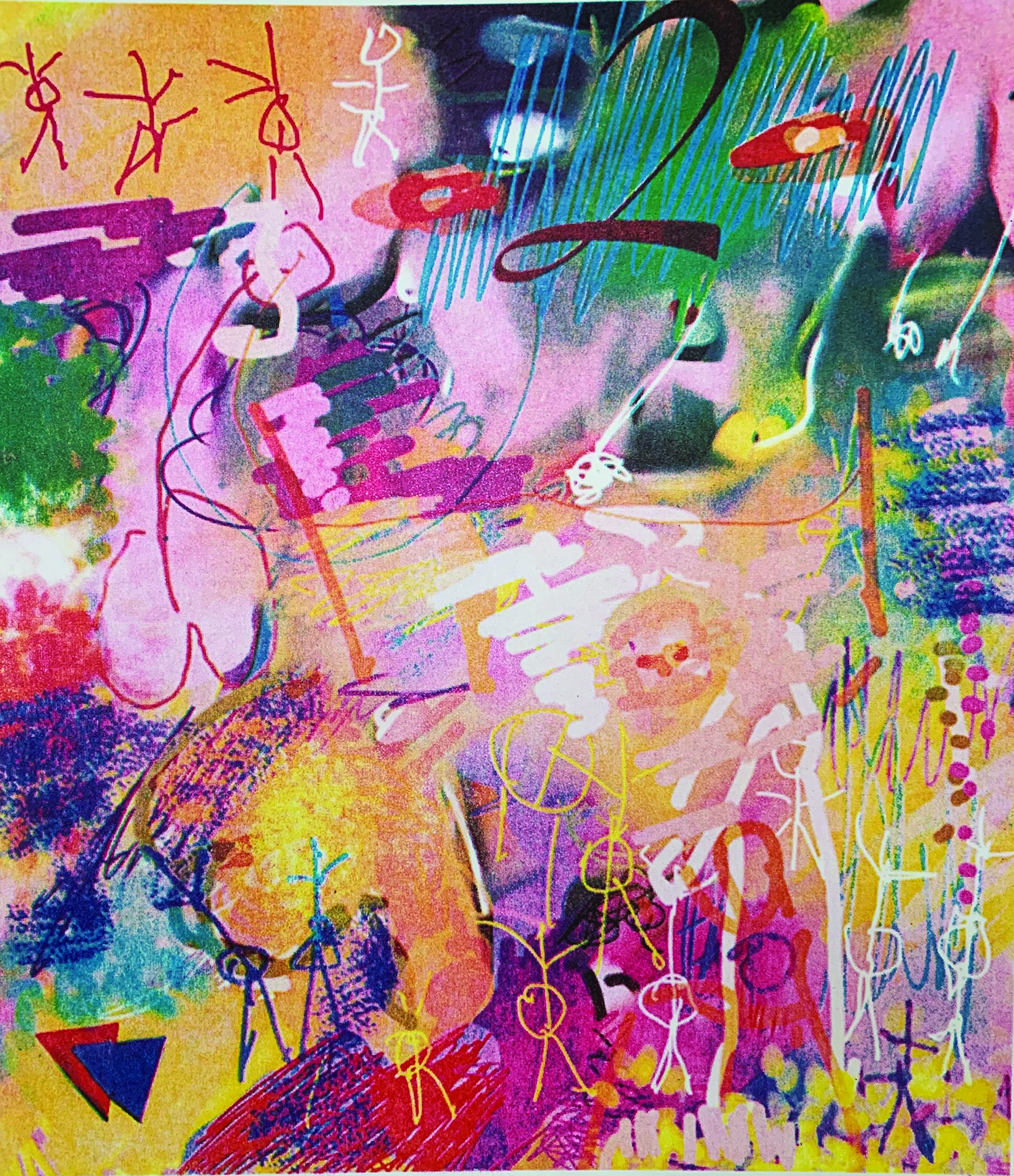
Number2
Lithograph
8″ x 7.5″
2021
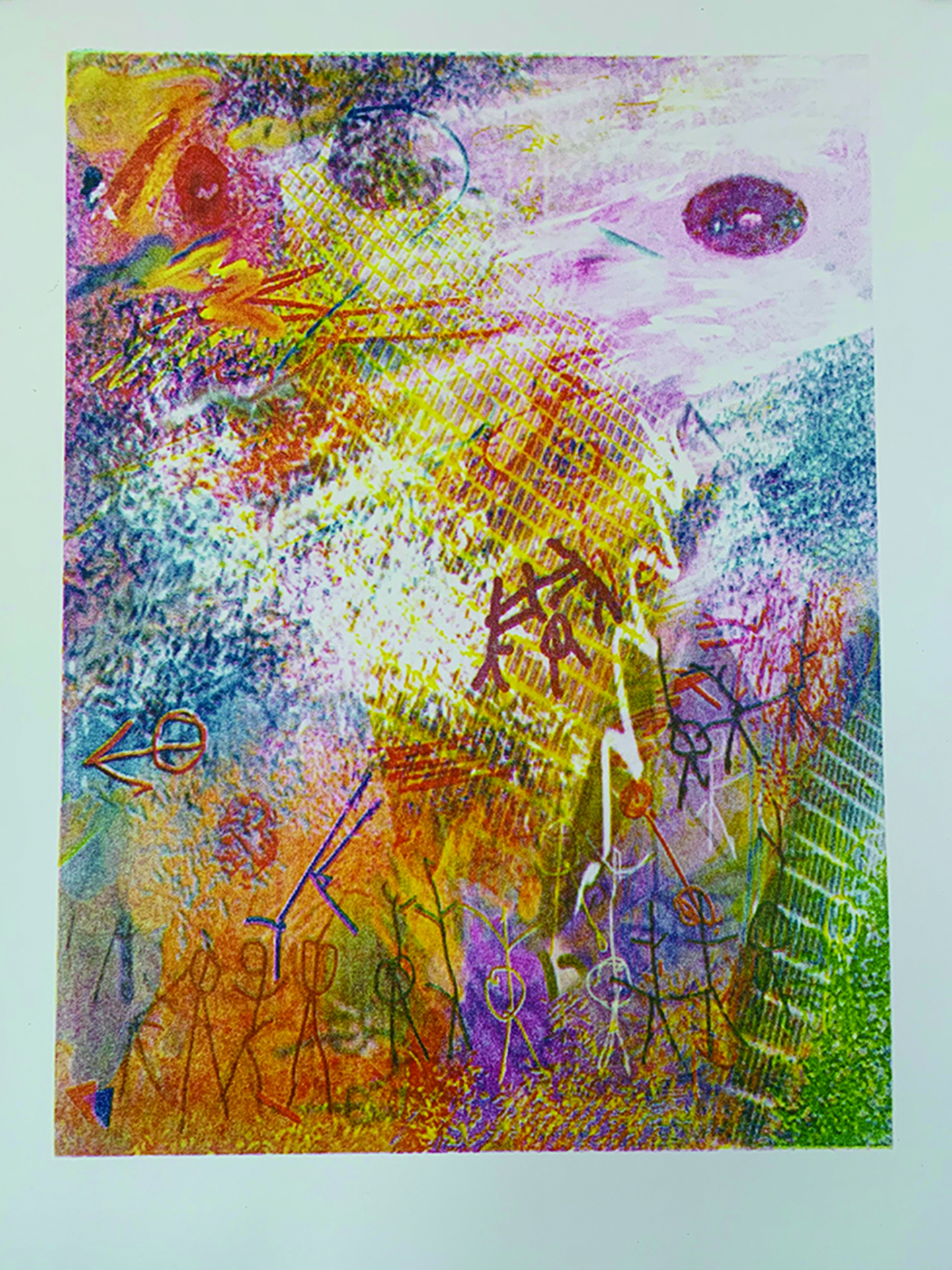
Day at the Beach
Lithograph
20″ x 16″
2022
B: Where are you now? What is your practice like? Where are you being creative, in a formal studio at home or elsewhere? How has the pace/priorities of your making changed since leaving the academic expectations of creative/research output.
P: Right now I feel a bit lost. I miss teaching. I miss Visalia. I miss my students. Retirement sucks. It’s supposed to be our golden years but for me it’s pot metal. When I was 30 I told myself that all I wanted was a litho studio and all the paper that I needed until I die. Well, it came true and I don’t know what to do with it. I had purpose when I was in my 30’s. Most of my work was political, about AIDS and poverty… everything around me. So now I don’t have the ideas or subject matter that I had when I was younger. I don’t have that sense of urgency to paint or draw and say something important to leave behind when I’m gone. Drawing my dog, Ventura cityscapes, the beach, local characters and the homeless is not what I expected to be doing. I thought that I would be making relevant art. I am saved by drawing. I have to draw every day. I was taught that drawing was the most important skill I should have and I’ve made it a point to draw all the time. I live by the words in Aesop Rock’s song “NO REGRETS”.
I’m drawing all day on my iPad. I like it because I can draw as fast as I think and I don’t have to slow down to mix paint. I like that the drawings and paintings are not printed out, there is no physical evidence that anything was created. It’s backed up on a flash drive.
I realize now that I was always a teacher and that art always took 2nd place. Teaching my students was the most important thing in my life. I’ve been doing lithography for over 50 years and it was always about the process. The more I experimented in my studio, working on specific assignments for my students, the better teacher I became. I think that my real art was teaching lithography to those who wanted my knowledge. I am still searching for that subject matter that can excite me to want to work day & night. I want to be possessed with making art. I want to be so excited that I can’t wait to go out to the studio each morning to see what I’ve done. I want to fall in love with it again. My biggest fear is that this won’t happen.
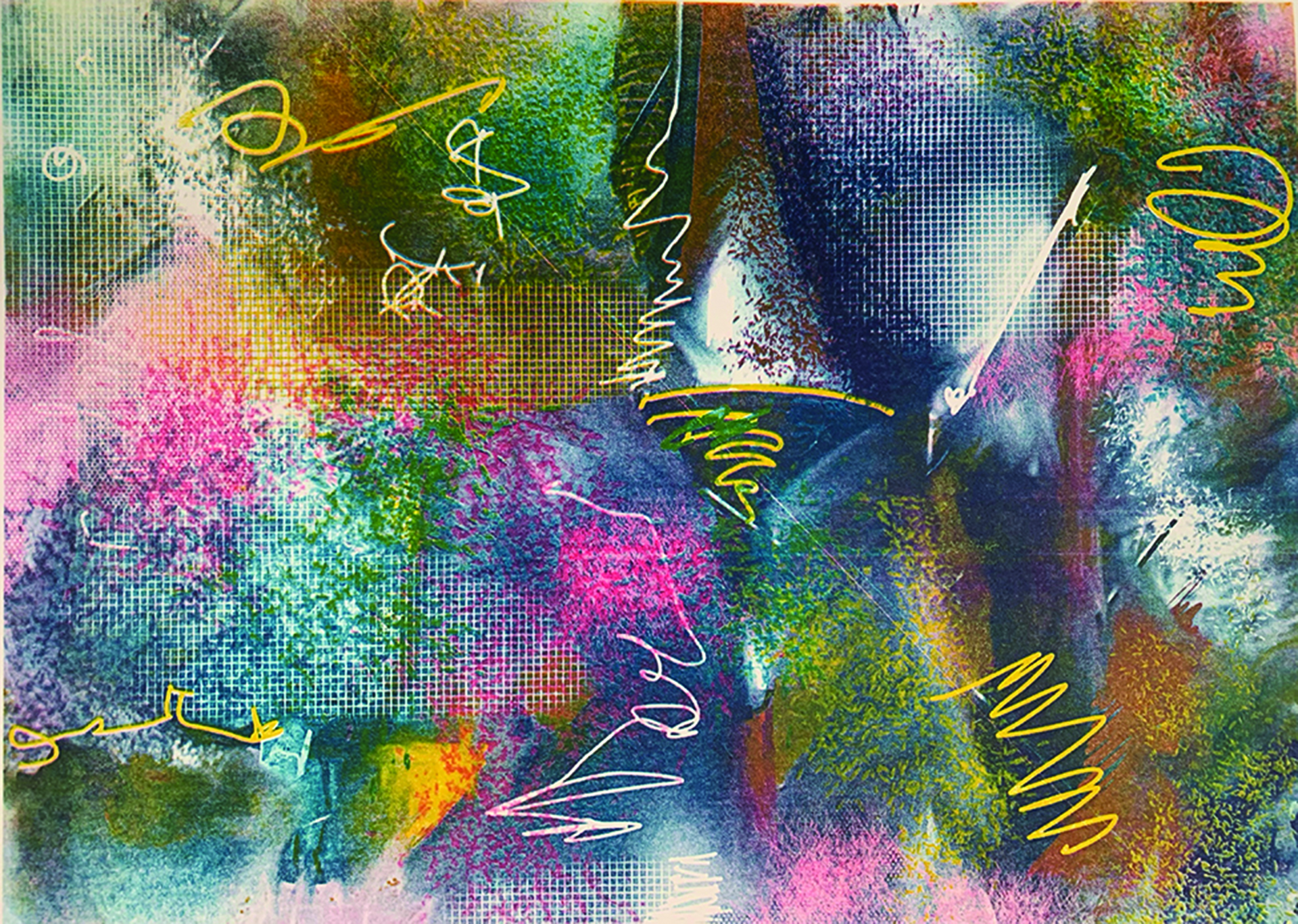
Party
Lithograph
10.25″ x 14″
2022
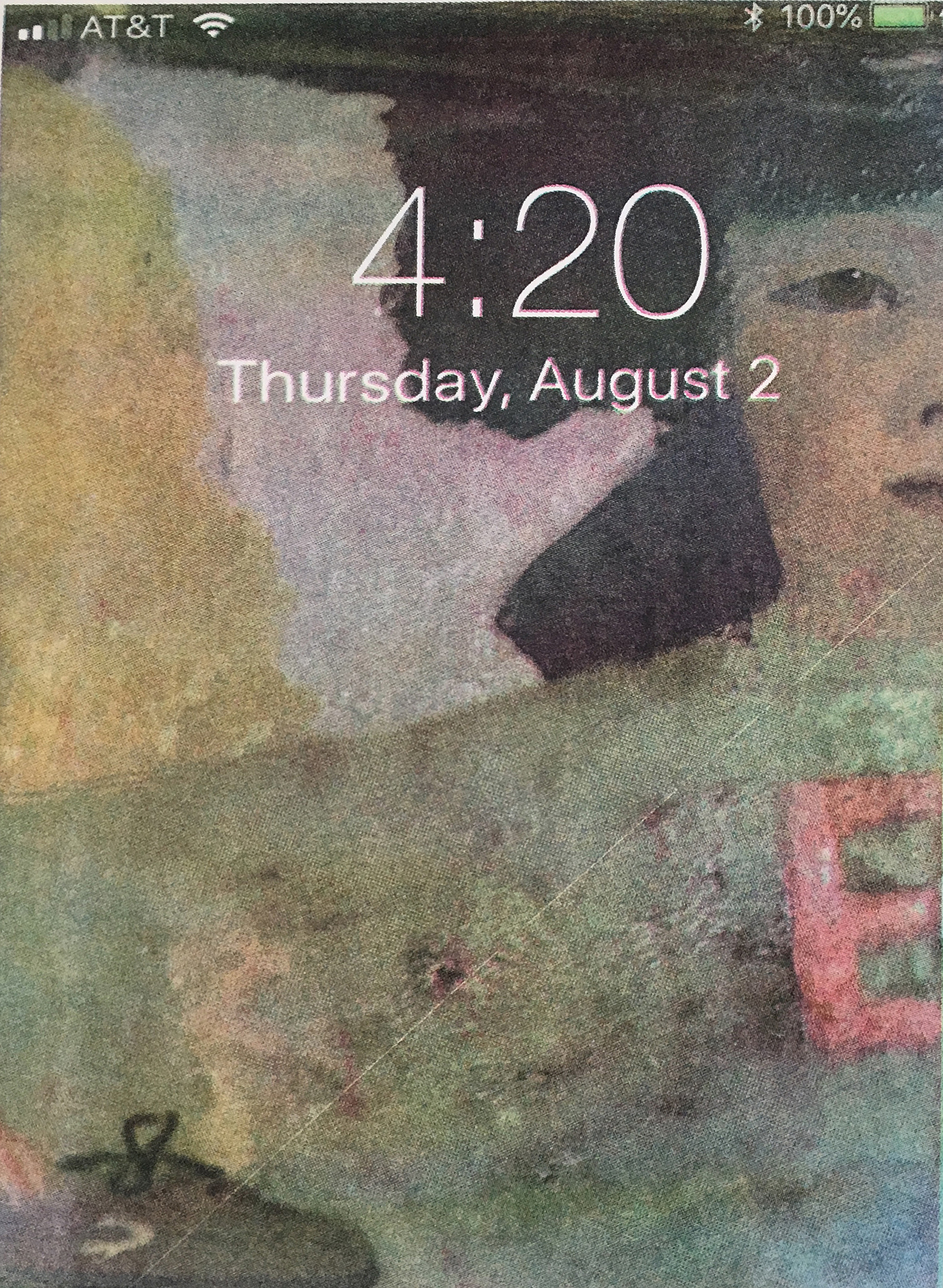
420
Lithograph
20″ x 16″
2021
B: We have known each other for nearly 20 years! When I met you at Frogman’s 2005 you were recently recovered from prostate cancer. Over the years you’ve been laid low at times by health issues including debilitating back problems and extreme vertigo. How has your creative practice changed to accommodate your health and the effects of aging?
P: I think that years of lifting weights has killed my back and doing lithography didn’t help the situation. I have had to give up using my big press for a Conrad combination press that is mounted on a high press stand so that I don’t have to bend over when I print. I love my large Rembrandt Graphics Fuchs & Lang press and it was a sad day when I had to stop using it. It’s hard to believe that was 20 years ago. I have arthritis in my both my hands. My tendons are shot because of lifting too heavy of weights at the gym. If I had known that overtraining and lifting too heavy was going to screw me up in old age, I wouldn’t have done it. A 310 lb squat killed my back & forced me to change the way I did things so that I could continue printing.
Another thing that happened, which wasn’t my fault, I fell and knocked myself out and that night while drawing on my iPad there were millions of ants running across the screen. I looked at the walls and ants were there too. The next day they were still there so I had my eyes looked at. They discovered that I had macular degeneration. The ants became cobwebs and it’s like looking through cheesecloth. I had cataract surgery recently and it didn’t really help anything. I still can’t draw a straight line because the horizontal & vertical lines and the edges of objects or differing values on the edges where 2 objects meet is jagged. I never expected my body to start falling apart so I wasn’t always careful or concious of what I was doing. I still don’t notice when I get hurt because I’m such a space cadet. I’ll see a cut or bruise and not even realize that I got hurt. I am really a space cadet who likes living in my head. That’s a way I would capture students! I would ask the first day of class who liked living in their head. There would always be a couple of students who knew what I was talking about. When I explained that it’s something that happens when you get lost in what you are doing and hours can go by and it seems like it was just minutes. That’s living in your head and it’s my favorite place to be. Students would continue taking drawing classes because they learned how to live in their head and they liked it.

Dreaming Not Dead
Lithograph
20″ x 15″
2018
B: In recent years much of your practice has migrated to iPad drawings. Some of that output is then translated into lithographs. Could you share why you find it important to create a physical edition of these virtual, even ephemeral artworks? How does that relate to your view of the evolution of printmaking/media broadly?
P: I feel that certain prejudices that some people have for digital art is changing, but it’s not changing fast enough for me. I think that there is still the misconception that digital art is all filters and computer wizardry but that’s not always the case.
I’ve been using a computer since 1994 mostly as a graphic design tool. I taught digital art at COS for 20 years but we used a mouse. I always said if they made something flat that you drew using a special pencil, I would buy one. I saw the very 1st iPad commercial on T.V. in November of 2015. I called Apple & placed my order. It came in two days but the pencil was back ordered and I had to wait for three weeks for mine to show up. It was the longest wait of my life. I fell in love with it because it gave me complete freedom to draw and be fearless. It has unlimited undo’s. I could duplicate the image and try new things without destroying the original to make experimental changes. I liked the fact that I could draw as fast as I could think. Everything is instantaneous. I’m quicker & freer & I can make mistakes in judgement and lasso the area and cut it or copy it and move it. I don’t have to repaint it.
I’ve been into drawing space since art school. I am relearning how to draw space on my iPad. It’s not an easy thing to do, especially the way that I draw. I like challenges. I don’t feel that it’s important to make a physical edition of the iPad drawings because I feel like the iPad is one medium which doesn’t need to be printed. I like the idea of them remaining in the original digital form. I don’t print the drawings from a digital printer. The lithographs are lithographs printed from color separated laser prints transferred to a stone. Like sharpie drawing on a stone, a transfer is done on a previously gummed stone. The gum is washed off really well and transfer the image. After it’s printed the toner is removed and I counter-etch with lemon juice for a few minutes, gum the stone, wash off the gum and pull my next transfer. This is a two hundred year old medium that is usually editioned. I am only doing editions of six prints. I don’t consider them as anything but lithos. They are just drawings that have been done using an iPad, a medium that I use to do a print.
I don’t sell my iPad drawings because I don’t print a digital print using a printer. I wouldn’t even know what to charge. So I put them on Instagram and anyone can print them out. A few people have asked for higher resolution files to print a large print and I gladly send it to them.
It’s funny that I don’t just hit command”P” and use a color printer. Even though the printer is digital. I love litho and drawing on an iPad so combining the two was a natural thing for me to do. I am compelled to draw every day and printing my iPad drawings as a litho keeps my mind occupied. I want to make lithos but it’s sometimes difficult graining and printing because of my arthritis and back. Somedays it’s ok. One thing I would caution young people about is being aware of what they are doing to their body. As your body ages all of the things you did while young come back to haunt you.
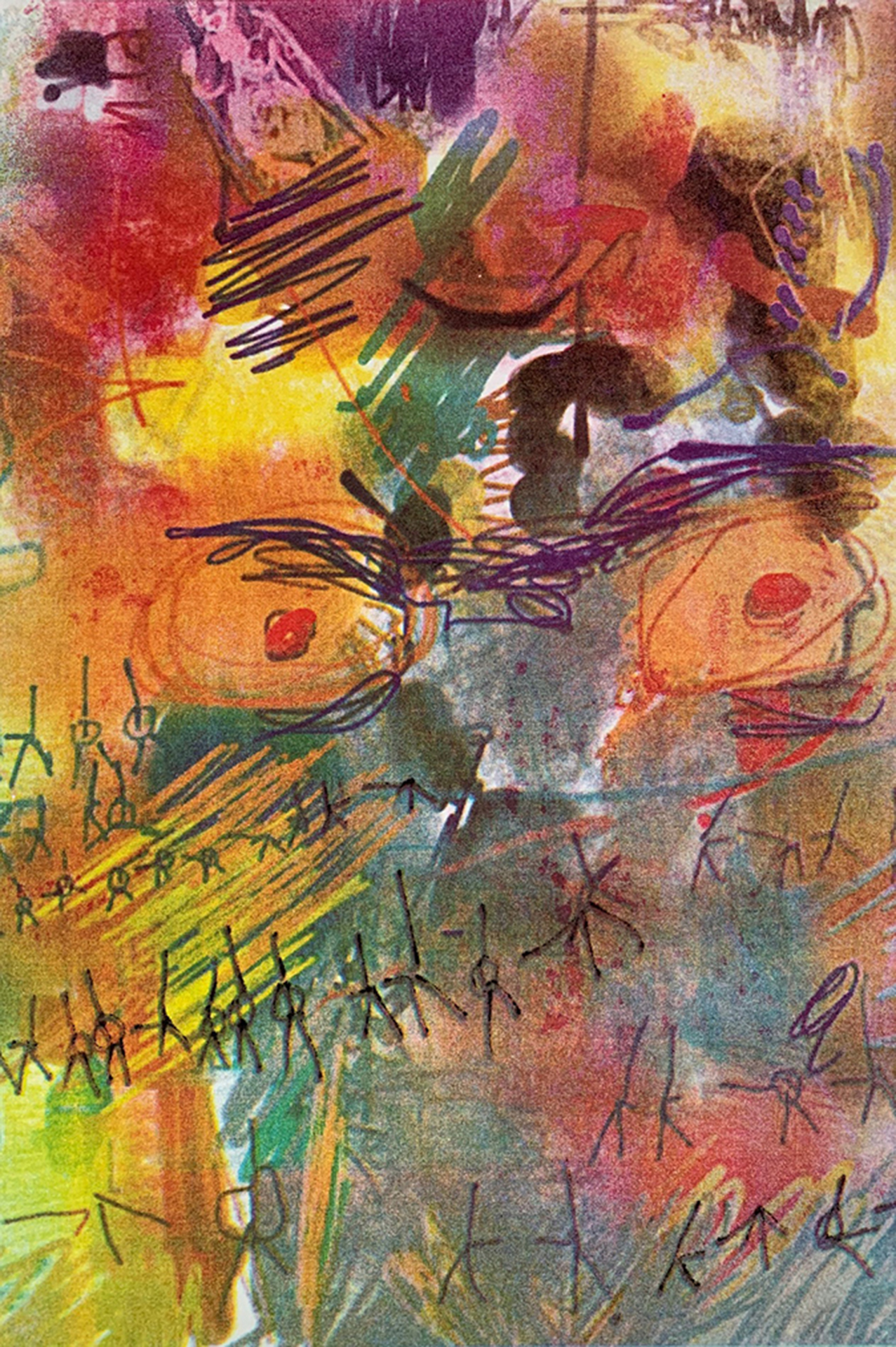
My 2nd Wife
Lithograph
20″ x 16″
2021
B: You’ve always been so prolific–in part because of your rapid-fire lithography process–and I see that quickness in your subject matter as well. Your work over the years has often featured candid, intimate moments from your daily life, which in turn are sometimes allegories for bigger political or societal statements. How do you want your audience to interpret and find cohesion in those “snapshots”? What do you see as the through line for your career?
P: About that rapid fire process: I started doing reduction litho in earnest about 20 years ago. I love it but the stone becomes course after two or three colors counter-etching so I tried to figure out a way to draw on the stone without counter-etching, I tried a few things and there was a sharpie laying around so I drew on the stone and it printed. From there I figured out that it works best on a used stone, one that has been gummed or etched. The sharpie sits on top of the stone because the stone can’t absorb the marker. It’s really a surface roll because your ink sits on top of the marker. I wrote a book called Voodoo Lithography: a Lithoholic’s Guide to Drawing on Rocks which explains many of my methods. I like taking my iPad drawings to a stone. I like the fact that I can combine these two very different mediums, one contemporary and the other over 200 years old.
B: You identify as a bisexual artist and have spoken about how you feel bisexuality is easy to ignore or dismiss by society at large, even in the Queer community. How does your sexuality and your experience as a BI man manifest itself in your work? Is there a thread of content that addresses your sexuality in the snapshots we just discussed?
P: I have been bisexual as long as I can remember. I didn’t think much of it until I hit 30. I saw a psychologist to figure out what was going on with me. She told me that I was bisexual and she taught me how to deal with it. You are only truly bisexual when you are alone. If you are married the world sees you as straight and if you are with the same sex the world sees you as gay. Bisexuals are hidden because we are one or the other and people can’t deal with both. I had a few students who were bisexual and they told me about their problems with being bi so I started a bisexual support group on campus.
I had them do a drawing about their bisexuality and they couldn’t come up with anything. I’ve done a series of paintings and lithos using bisexuality as subject matter but I am at a road block. I started an Instagram feed called Bisexwokeness and I put it up so that bi followers would post some art. So far nobody’s posted anything. I have a few things posted. It’s a difficult subject to explore because it is such a “sexual” subject, the only way I could figure out how to portray it. I don’t know how to deal with it in a non-sexual way.
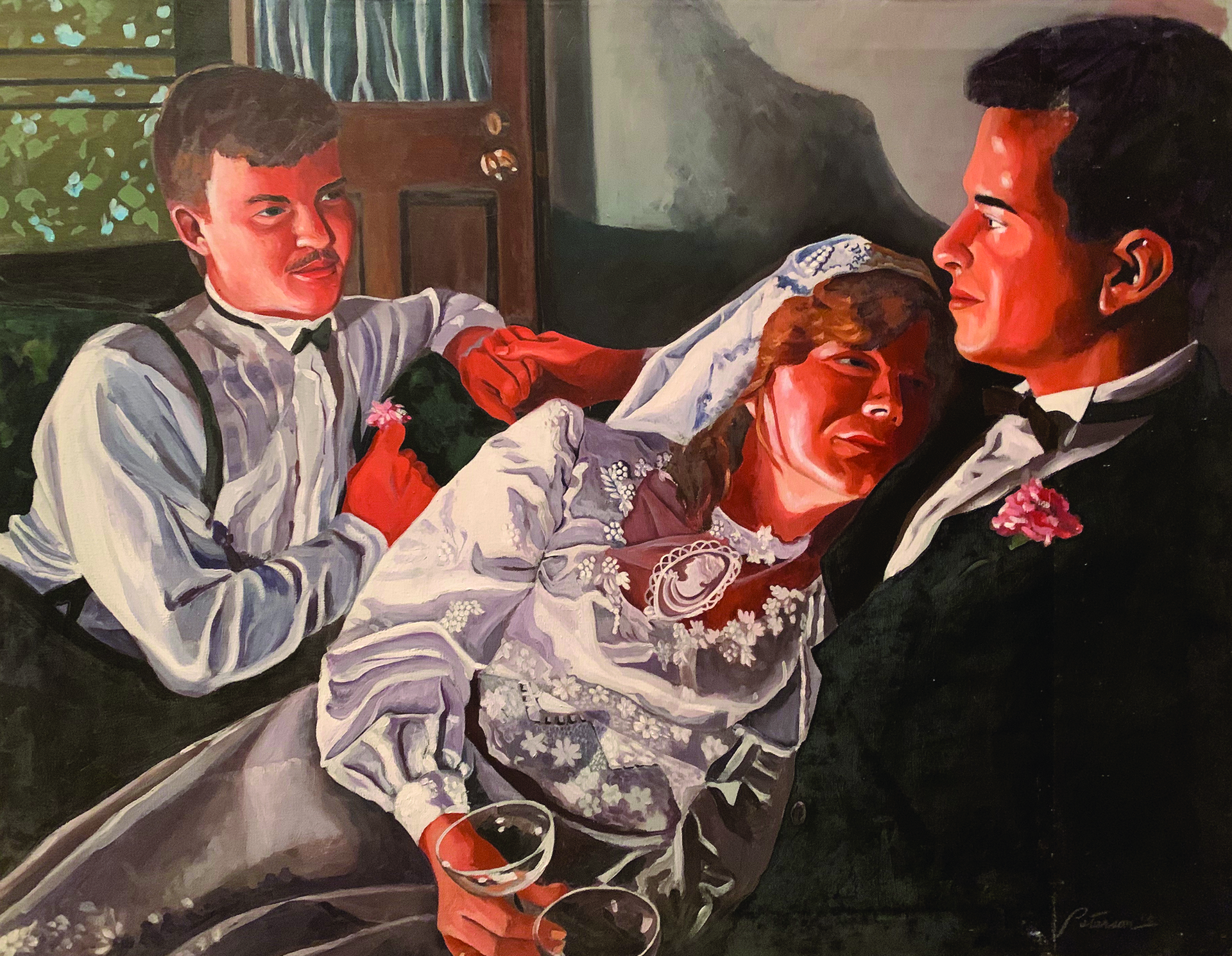
Your Life Is A Lie
Oil painting & iPad painting
24″ x 36″
B: You have been involved with SGCI for decades and received the Award for Excellence in Teaching in 2023. What are your thoughts on how the organization has developed over the years? Do you have any ambitions you’d like to see SGCI reach for the future, perhaps regarding our educational mission in particular? What advice do you have to the membership, especially students and those just entering the field?
P: I think that the best thing about SGCI is the connections that are made. You meet professors that teach in schools where you want your students to attend. You meet future faculty among the grad students. There are lectures, demos and exhibitions. It can be a very intense experience and sometimes there’s print overload! SGCI changed my life. It also changed the lives of students.
Of all the awards I’ve received, the Award for Excellence in Teaching in 2023 is the award most dear to me. I am honored to have received this award as it marked my retirement from teaching litho for over 40 years.
One thing that I’ve wanted to do is workshops for four grad students a couple times a year. Free room and classes and the students pay for transportation and food while they are here. BBQ’s and communal dinners and 24 hours a day printing time. I’ve tried to set this up but have failed. Why free? Because I miss teaching and grad students are broke. Maybe SGCI could help in starting something like this.
